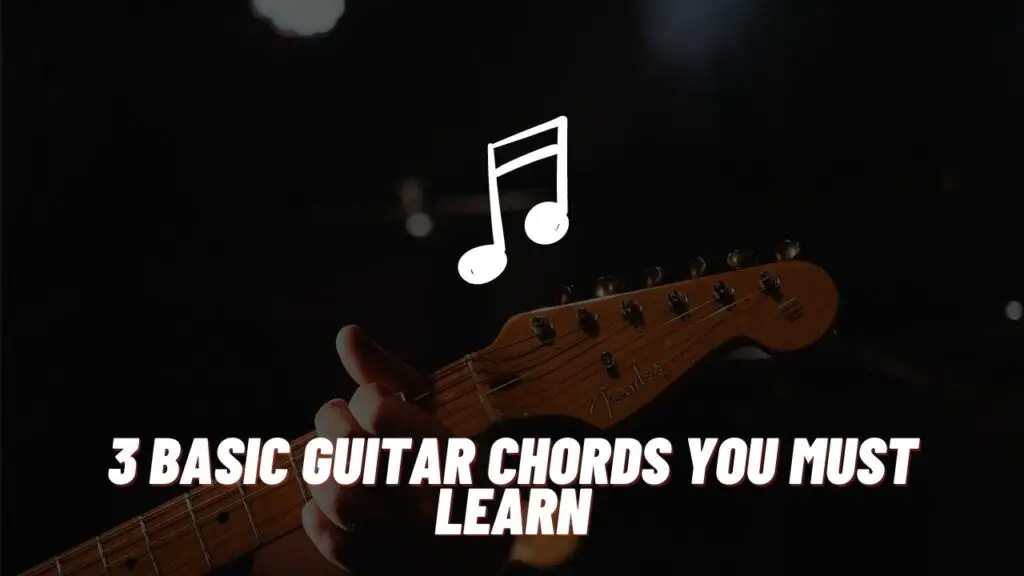Whether you are a beginner guitarist or at an intermediate level, to play rock music you must learn these electric guitar techniques that will not only improve your technical vocabulary but also will help in your improvisation skills. Rock music is the most common type of music that you will play if you are deciding to switch from acoustic to electric guitar. Therefore you will need to have a deep range of skills and techniques that will make it easy to tackle this genre.
So, let’s take a look at these electric guitar techniques.
- Hammer on and Pull-off
- String Bending
- Vibrato
- Palm Muting
- Harmonics
- Tapping
- Slide Guitar
- Double Stops
Let’s look at each of these techniques on a deeper level. For example what they do and when are they used.
1. Hammer on and Pull-off
Hammer on and Pull-off is one of the most common guitar techniques that is used in all styles of guitar music. It is basically a continuous flow of hammering and pulling off a note. Here the 3rd finger is used to hammer a note and the same finger is used to pull off the same note on the same string. For example, place your 1st finger on the 5th fret of 1st string and using your 3rd finger hammer ( strike ) on the 7th fret with a force on the same string. The next step is to pull-off the note on the 7th fret using your 3rd finger in such a way that the 5th fret note starts ringing. By combining hammer-on and pull-offs you can create a progression of fast notes that are known as licks and riffs. It is not as easy as it sounds, but with time and practice, one can build the finger strength and dexterity to master this technique.
2. String Bending
String bending is a guitar technique where a number of fingers ( mostly 1st, 2nd, and 3rd finger ) is used to bend a string. There are 2 types of string bending. One is halftone bend and the other is full tone bend. To execute half tone bend, place your 1st finger on the 5th fret of 1st string and bend it upwards slightly and try to match it with the tone of 6th fret. Now, to execute full tone bend, place your 1st finger on the 5th fret of 1st string, bend it upwards fully and match it with the tone of 7th fret. This technique is also used in almost all types of guitar music especially in rock while playing solos.
3. Vibrato
Vibrato is again a very essential technique that makes one guitarist different and unique from the other. This technique is executed by shaking the root note slightly up and down, with the help of the left-hand wrist and fingers. This is basically done to sustain the sound of the root note. You will never find, 2 guitarists, having the same style of executing this technique.
4. Palm Muting
Palm muting is a right hand technique widely used in genres like hard rock and heavy metal. This technique is basically applied to partially mute and dampen the distorted sound of a guitar and it is executed by resting the side of the right hand over the bridge or the pick ups. One can experiment with different hand position to produce more chunkier and unique tone. You can carry out this technique even on an acoustic guitar but the top sound comes out when it is applied on an electric guitar with distortion on.
5. Harmonics
There are two types of harmonics that you can execute in guitar. One is natural harmonics and the other is pinch harmonics. This technique is one of my favorite and I use it often unknowingly. Natural harmonics is achieved when you touch the strings above the 5th, 7th and 12th fret slightly with your index or ring finger. This is usually a left hand technique where as pinch harmonics is a right hand technique that you can execute by using your choking your pick over the strings. Pinch harmonics is not as easy as one thinks but by devoting some time daily, you can master it completely.
6. Tapping
Tapping is a 2 hand guitar technique that includes hammer-ons and pull off and used to create a fast progression of notes. It is executed by resting the left finger on a selected fret and then tapping its relative notes with the index finger of the right hand. For example, tap the 5th fret of 1st string and pull off with your left-hand ring finger and as soon as you pull off your ring finger, tap the 12th fret of 1st string with your index finger of the right hand and again pull it off. As a result of this continuous hammer on and pull off, a series of notes are played which sounds cool. It is not an easy technique and takes a lot of patience and practice to master it. This technique is widely used in genres like rock and metal but also seen in blues.
7. Slide Guitar
Slides are one of the most commonly used left-hand guitar technique that is used in blues music. This technique is executed by wearing a hollow piece of material ( tube ) into the ring finger of the left hand and sliding it over the string while picking the string. The sound produced when this technique is performed is very soothing and gives a country feel to it. Many great guitarists like B.B King, Guthrie Govan are widely seen in using this guitar technique. It takes a relaxed hand movement to apply this technique and takes a lot of practice to master it.
8. Double Stop
Double stops are not typically used guitar techniques because it requires to play 2 notes at a time, which some guitarists find it. difficult. But one can use this technique to create beautiful riffs and melodies and can be a great add on to your guitar solos. This technique is widely seen in blues music.
Conclusion
By practicing all the techniques that are listed above you can open a new door of opportunities to your playing. Take each technique once at a time and try to research more about it, which will eventually help in understanding it thoroughly.




